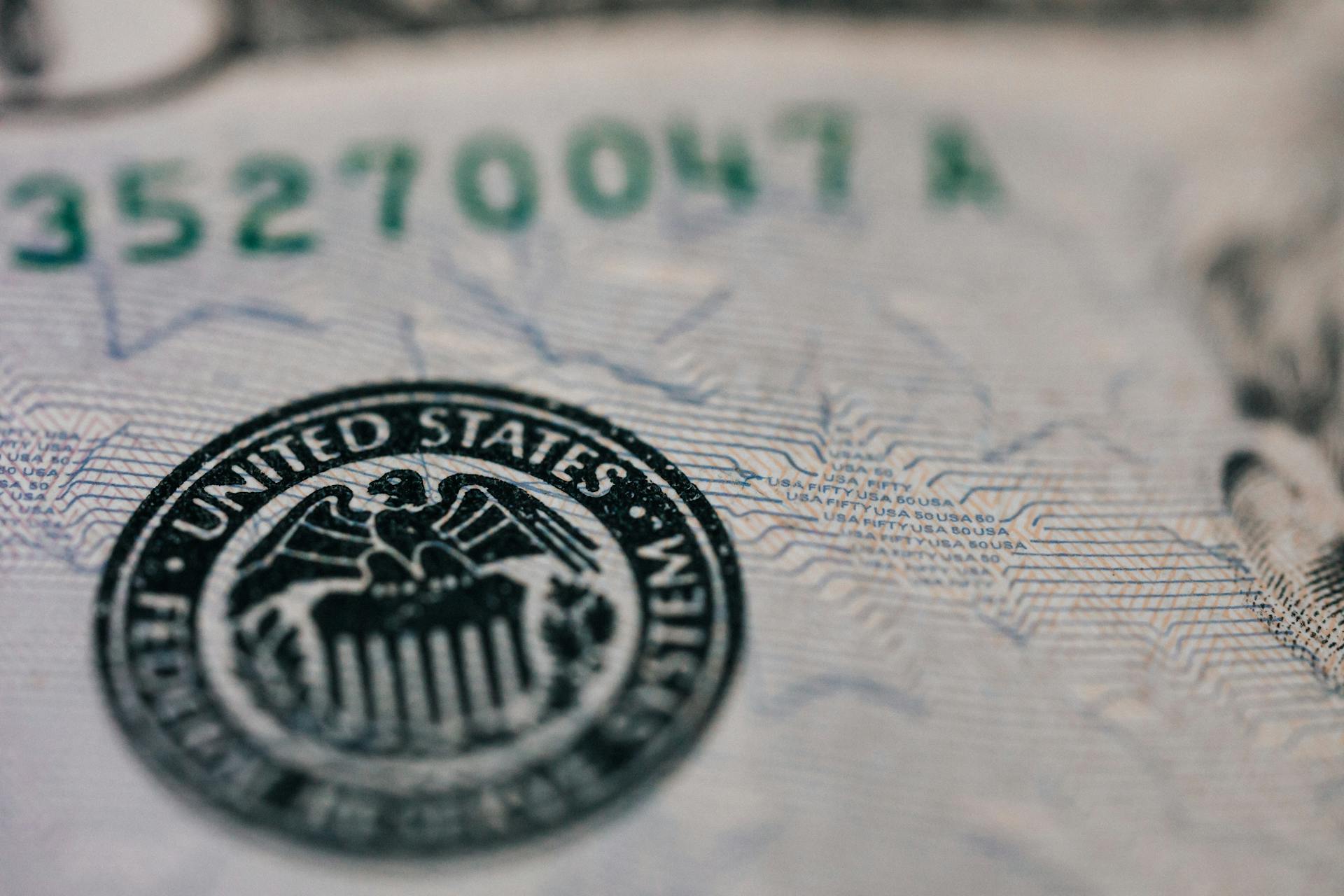
Haruhiko Kuroda's term as Bank of Japan Governor ended in April 2023, and Kazuo Ueda took over as the new governor. Ueda is the first academic to lead the central bank.
The Bank of Japan has been struggling to achieve its 2% inflation target, and Ueda's biggest challenge will be to revive the economy. The country's population is aging rapidly, and the labor market is facing a significant shortage of workers.
Economic growth in Japan has been sluggish, and Ueda will need to find ways to stimulate the economy. The Bank of Japan has already implemented several monetary policies to boost growth, but more needs to be done.
You might like: Turkish Central Bank Governor
The Governor's Challenges
Japan's deflationary past continues to haunt the country, with zombie companies kept alive by ultra-loose monetary policy.
Maintaining a very low interest rate for a long term may actually hamper further corporate restructuring in a time of global uncertainties.
Prof Shirai believes unviable companies stay afloat, while viable ones struggle to get the labour forces they need.
A labour shortage is a pressing issue in Japan, and those labour forces should be transferred to more viable companies.
More money should be allocated to those companies, but it's unclear how the new Governor, Mr Ueda, will approach this challenge.
Mr Ueda has a reputation as a pragmatic theorist, but it's too early to tell if he'll chart his own path or stick with the status quo.
He's already signaled that he'll take his time and engage in thorough discussions with BOJ board members to address the side-effects of prolonged easing.
Bank of Japan's Policies
The Bank of Japan's policies were put to the test in 2024 as the yen began to depreciate. The Ministry of Finance and the Prime Minister's Office reacted hastily to the situation.
Finance Vice Minister Kanda intervened to sell dollars for yen by an unprecedented amount when the yen fell to 160 against the dollar. This was a 34-year low.
You might like: Bank of Japan Yen
BOJ Governor Ueda Kazuo was summoned to the Prime Minister's Office on May 7, 2024, by Prime Minister Kishida. Governor Ueda was admonished for his careless statement.
Following the meeting, Governor Ueda stated that the BOJ would carefully monitor the recent depreciation of the yen in the management of monetary policy. This marked a shift in policy toward a focus on foreign exchange.
The BOJ reduced its purchase of long-term government bonds by ¥50 billion from a monthly ¥6 trillion six days later. This small reduction was intended to place upward pressure on the long-term interest rate and stem the yen's trend toward depreciation.
However, the reduction was not enough to halt the yen's slide. The yen weakened past the 160 mark again in June, fanning the administration's sense of urgency.
Finance Vice Minister Kanda requested that the purchase of government bonds be sharply reduced in parallel with massive intervention in the foreign exchange market.
Digital Transformation
The Bank of Japan's digital transformation under Governor Ueda has been nothing short of revolutionary. The development of digital technology has significantly improved payment systems, enabling nationwide interbank data communication since 1973 with the launch of the Zengin System.
This marked a significant milestone in the Bank of Japan's efforts to increase efficiency and reduce risk in payment systems. The introduction of the Bank of Japan's Financial Network System (BOJ-NET) in 1988 further accelerated this process.
The implementation of DVP settlement in BOJ-NET in 1994 eliminated settlement risk for Japanese government bonds (JGBs) and Bank of Japan current account balances. This was a major breakthrough in reducing systemic risk in the financial system.
A major shift towards real-time gross settlement (RTGS) occurred in 2001, reducing systemic risk even further. Since 2002, the dematerialization of various financial instruments, including JGBs, commercial paper, corporate bonds, investment trusts, and listed stocks, has continued to increase efficiency and reduce risk.
Here are some key milestones in the Bank of Japan's digital transformation:
- 1973: Launch of the Zengin System
- 1988: Introduction of the Bank of Japan's Financial Network System (BOJ-NET)
- 1994: Implementation of DVP settlement in BOJ-NET
- 2001: Transition to Real-Time Gross Settlement (RTGS)
- 2002 — present: Progressive dematerialization of various financial instruments
Ueda's Experience
Ueda Haruhiko, the current Governor of the Bank of Japan, has a unique perspective on monetary policy.
He was born in 1948 in Tokyo, Japan, and graduated from the University of Tokyo.
Ueda's experience as a central banker spans over four decades, starting from his early days as a researcher at the Bank of Japan in the 1970s.
He has held various positions within the Bank of Japan, including Director-General of the International Department and Member of the Policy Board.
Ueda's tenure as Governor began in 2008, just as the global financial crisis was unfolding, and he played a crucial role in shaping the Bank of Japan's response to the crisis.
Under his leadership, the Bank of Japan implemented unconventional monetary policies, including quantitative easing, to stimulate the economy.
Ueda has also been a strong advocate for the importance of price stability in monetary policy.
As Governor, he has worked closely with international counterparts to promote global economic cooperation and stability.
Ueda's experience and expertise have earned him widespread recognition and respect within the global central banking community.
Conclusion and Schedule
The Bank of Japan Governor's vision for the future of payments is clear. He emphasizes the importance of anticipating future payment needs and risks, and harmoniously integrating new technologies with existing regulations and practices.
Governor Ueda acknowledges that payment systems have a unique path dependency, reflecting the evolution of each country's financial infrastructure. This means that the Bank of Japan will need to work with stakeholders to shape the future of payments.
The Bank of Japan is committed to fostering a robust and efficient payment system that meets the evolving needs of society, with a focus on collaboration and continued innovation.
See what others are reading: Quickbooks Online Payments Bank to Bank
Conclusion
As we conclude our discussion, it's clear that anticipating future payment needs and risks is crucial for a robust and efficient payment system.
Governor Ueda emphasizes the importance of harmonious integration of new technologies with existing regulations and practices, acknowledging the path dependency of payment systems.
Fostering a payment system that meets the evolving needs of society requires collaboration and commitment from all stakeholders, including the Bank of Japan.
The Bank of Japan is committed to working with stakeholders to achieve this goal, and Governor Ueda expresses his appreciation for FISC's contributions to shaping the future of payments.
Continued collaboration and collaboration are key to creating a future-proof payment system that benefits everyone.
If this caught your attention, see: In a Fractional Reserve Banking System Banks Create Money Because
Political Schedule

The political schedule is a crucial aspect to consider. In the upcoming election, the first debate is scheduled for March 16th, where the top three candidates will face off.
The current president has announced plans to address Congress on March 21st, where he will discuss key policy changes. This will be a significant moment in the political calendar.
The election day is set for May 15th, where voters will head to the polls to cast their ballots. It's essential to mark this date on your calendar.
The candidates' campaign schedules are also worth noting. Candidate A has a packed itinerary, with multiple rallies and town halls planned for the next few weeks.
Frequently Asked Questions
Who is the new governor of the Bank of Japan?
The current Governor of the Bank of Japan is Kazuo Ueda. He is leading the central bank's decision-making process on interest rates and monetary policy.
Who is the head of the Bank of Japan?
The head of the Bank of Japan is Kazuo Ueda, who serves as the Governor of the BOJ. He is responsible for leading the central bank's monetary policy decisions.
Does Bank of Japan governor Ueda say interest rates will be raised if economic price trends?
Yes, Bank of Japan governor Ueda states that interest rates will be raised if economic price trends align with the BOJ's outlook. This is in response to moderate price increases across various goods and services due to wage growth.
Who controls the Bank of Japan?
The Bank of Japan is controlled by the Policy Board, its highest decision-making body. This board sets the guidelines for currency and monetary control, overseeing the Bank's operations and officers.
Sources
- https://en.wikipedia.org/wiki/Kazuo_Ueda
- https://www.forbes.com/sites/williampesek/2024/07/29/bank-of-japan-faces-hardest-call-any-economist-has-ever-seen/
- https://medium.com/tokyo-fintech/boj-governor-ueda-the-future-of-payments-and-the-role-of-central-banks-b5c8d1890575
- https://www.channelnewsasia.com/asia/bank-japan-haruhiko-kuroda-kazuo-ueda-change-guard-3403636
- https://www.nippon.com/en/in-depth/d01030/d%C3%A9j%C3%A0-vu-for-boj-governor-ueda-interest-hike-strategy-stumbles-on-its-first-step.html
Featured Images: pexels.com


